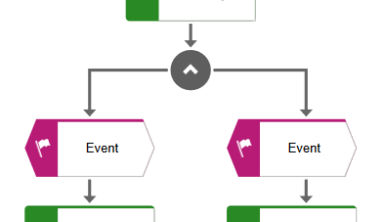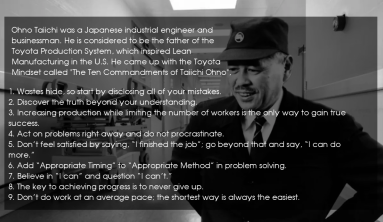Communication is something we do for most of the day in our personal and professional lives; yet most of us work on it less than our other skills. We’re taught about proper communication all through school and even into our college education. We’ve all been in a classroom where the teacher has stressed the importance of clear communication. Most of us have heard the idea “listening is the most important part of communication;” but how many of us continue to work on our communication skills as an ongoing process?

As lean practitioners, we constantly look to reduce different types of waste. How much time is wasted in your day because you did not take the extra time to verify someone knew exactly what you were talking about? Did they repeat it back to you in their own words, but misinterpret the message? Have you had undue stress caused in your personal life because you and your significant other were not on the same page after discussing money, kids, chores, shopping, or any other life-related topic?
I think many of us focus on the content of our communication and not necessarily on the process of our communication. We read an email over and over again to make sure it cannot be misunderstood by the recipient; however, it still gets interpreted different from how it was intended. Conversations often go much differently than we initially expected.
The truth is the communication process is clear and concise. It’s a two-way street and we need to make sure the recipient understands the intention of the communication as well as the content. It may appear to be an extra step in the process; however, confirming the correct translation of a communication string is critical to the success of value-added communication.
A few key things to keep in mind during your communication process:
- Listen – Understand the meaning behind what you’re hearing or reading.
- Repeat – Repeat what you heard or read in your own words to confirm understanding.
- Document – If the conversation is important and will be referenced at a later time, documentation is critical.
- Respect Preferred Modes – Your Baby Boomer colleague may be more accustomed to a traditional phone conference while your Gen Y colleague prefers to collaborate via Skype or social media.
- Be Timely – Respond or follow up in a timely manner before the message becomes irrelevant or obsolete. Even worse, you could be perceived as ignoring an issue.
- Add Value – Ensure your communication is productive and value-add. Your audience should be provided with a clear idea of how to move forward.

Example of Effective Communication in Logistics – A Carrier Performance Review:
Customer: Your KPI’s are not at the level of performance we need them to be. On-Time Performance must be at 98% and your current performance is 72%. This level is unacceptable and we need an action plan from you to improve it over the next 2 weeks.
Carrier: First, we’d like to apologize for the lapse in performance and we have a corrective action in place to for improvement. We had given you rates six months ago and we are unable to service those lanes at those rates and give you the service you deserve. If we can raise the rates on lane ‘A’ by $.05/mile, we should have no problem improving our service. We’re having to dead-head too far and it’s proving to not be profitable for us anymore. To be clear, you want us to actually achieve 98% On-Time Performance within two weeks, or do we simply need to be 98% on-time for the loads we carry over the next two weeks?
Customer: Excellent question! We want to see improvement on your performance. We cannot reasonably expect this number to jump to 98% in two weeks. However, we want to see that 98% of the loads you cover in the next two weeks are on time.
As you can see in this example, the carrier clarified the customer’s expectation in his own words to make sure both parties were on the same page. This effective communication clarifies how measurement will be calculated and sets a clear expectation for the next two weeks.
Written by Phil Schmidbauer, Lean Logistics Manager at LeanCor





